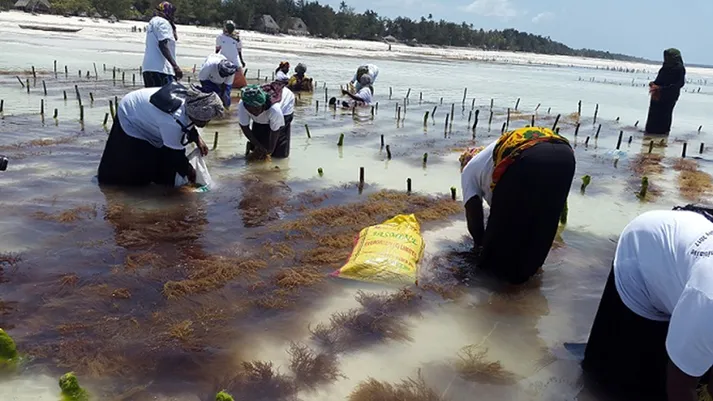Seaweed farming is providing Kenyan women with a means of earning a living and is being seen as an alternative to fishing due to declining fish stocks and as a less risky activity than farming on dry land. In this coastal town, seaweed farming mostly employs women who were previously not allowed to engage in fishing and is seen as more lucrative than farming on dry land. This is because farming on dry land is expensive and requires the use of chemical fertilizers, which can lead to soil degradation and reduced yields. Seaweed farming, on the other hand, does not require the use of chemical fertilizers and is therefore seen as a more sustainable and profitable option.
The project is mostly supported by the Kenya Marine Fisheries Research Institute (KMFRI), a national research institute that promotes the sustainable development of the Blue Economy. The KMFRI has recognized the challenges faced by farmers on dry land, such as invasions by wild animals and low amounts of rainfall, which have led to reduced yields. In contrast, seaweed farming has proven to be a more reliable source of income for these women.
Most of the raw materials produced by the group are exported to markets in South Africa, the United States, and China. Extracts from dried seaweed can be used in the cosmetic and pharmaceutical industries as well as soil fertilizer.
The seaweed farmer, Fatuma Mohammed, spoke about the challenges faced by farmers on dry land, stating that “we are unable to engage in meaningful farming on dry land since wild animals such as the colobus monkey, wild pigs, and baboons regularly invade our farms. They can destroy crops on a one-acre piece of land within a day.” She went on to emphasize the benefits of seaweed farming, stating that “farming on dry land is expensive, as it requires different types of fertilizers that may be water-based and thus need to be sprayed onto plants or applied in soil. The use of chemical fertilizers has led to soil degradation thus leading to reduced yields. Seaweed farming is the better option, as we are able to reap benefits.”
The field officer from the KMFRI, Nasoro, also highlighted the challenges faced by farmers on dry land, stating that “the yields from farming on dry land are not great, since there are many challenges, such as invasions from wild animals and thieves. The yields were also negatively affected by low amounts of rainfall this year.” He went on to emphasize the importance of seaweed farming as an alternative source of income for these women.
Overall, seaweed farming is providing Kenyan women with a reliable source of income and is seen as a more sustainable and profitable option compared to farming on dry land. The raw materials produced are mostly exported to markets in South Africa, the United States, and China, and can be used in a variety of industries, including the cosmetic and pharmaceutical industries as well as soil fertilizer. The project is supported by the KMFRI, which promotes the sustainable development of the Blue Economy, and is helping to alleviate some of the challenges faced by farmers on dry land.



